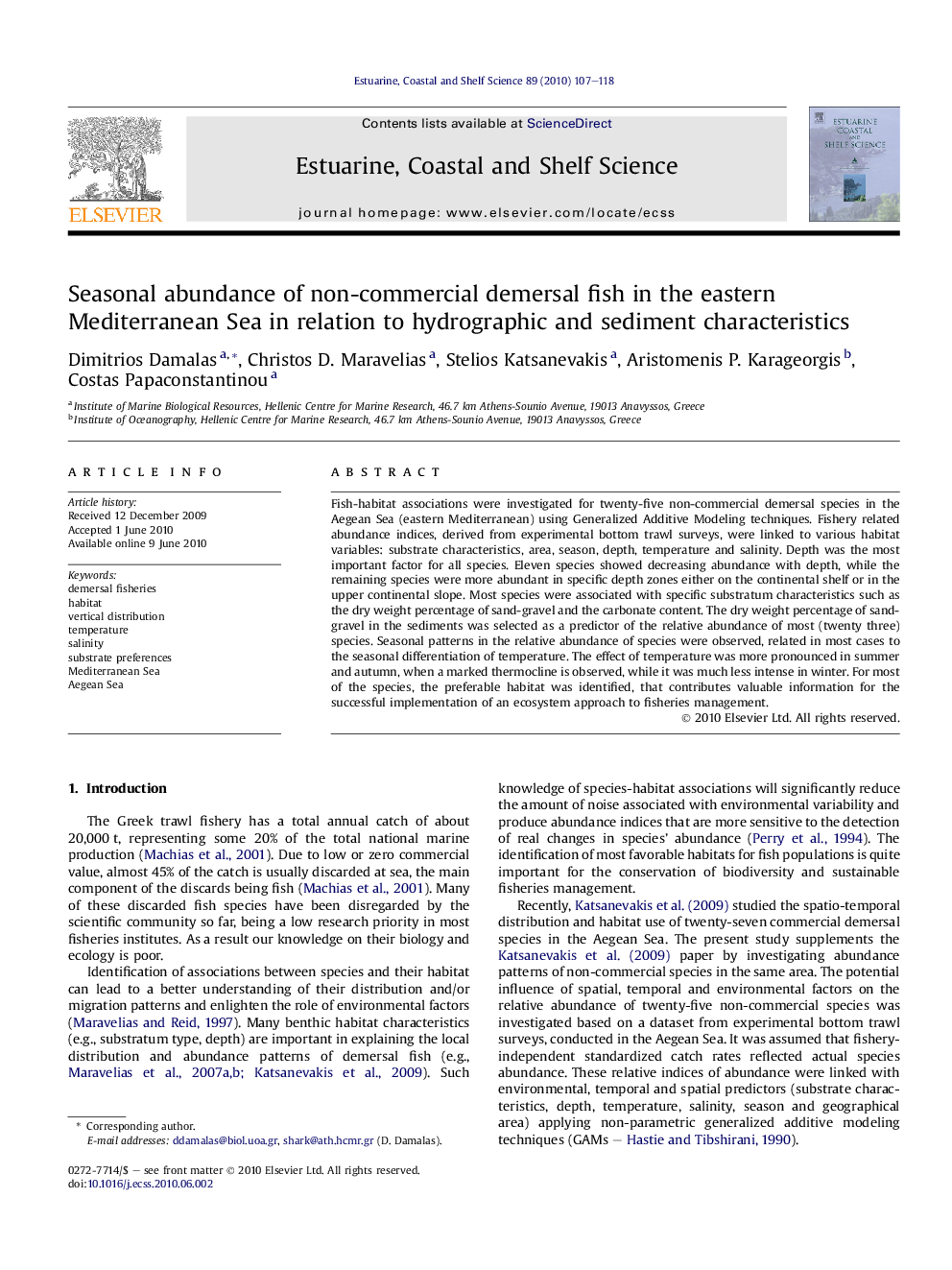| Article ID | Journal | Published Year | Pages | File Type |
|---|---|---|---|---|
| 4540756 | Estuarine, Coastal and Shelf Science | 2010 | 12 Pages |
Fish-habitat associations were investigated for twenty-five non-commercial demersal species in the Aegean Sea (eastern Mediterranean) using Generalized Additive Modeling techniques. Fishery related abundance indices, derived from experimental bottom trawl surveys, were linked to various habitat variables: substrate characteristics, area, season, depth, temperature and salinity. Depth was the most important factor for all species. Eleven species showed decreasing abundance with depth, while the remaining species were more abundant in specific depth zones either on the continental shelf or in the upper continental slope. Most species were associated with specific substratum characteristics such as the dry weight percentage of sand-gravel and the carbonate content. The dry weight percentage of sand-gravel in the sediments was selected as a predictor of the relative abundance of most (twenty three) species. Seasonal patterns in the relative abundance of species were observed, related in most cases to the seasonal differentiation of temperature. The effect of temperature was more pronounced in summer and autumn, when a marked thermocline is observed, while it was much less intense in winter. For most of the species, the preferable habitat was identified, that contributes valuable information for the successful implementation of an ecosystem approach to fisheries management.
